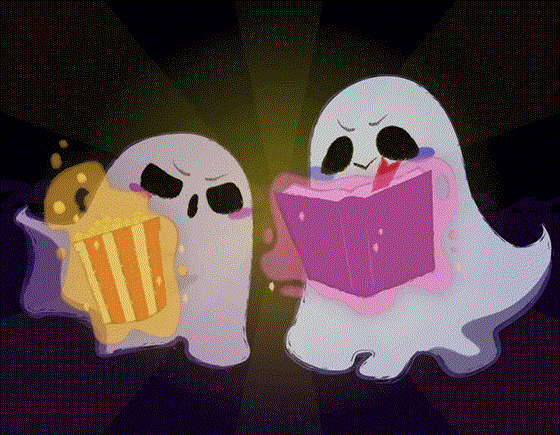I have been a horror writer since sixth grade. I braved the literary genre before building up the courage to watch horror movies, whose sudden jump scares trigger my anxiety.
I recently watched “The Shining,” “Fantasy Island” and “Get Out.” These movies fell flat to me in comparison to the horrors found in their books.
“The Shining” book was terrifying. I won’t spoil too much, but there were far more scares in the book than the movie. For example, the woman in the bathtub monster appeared far scarier in the book than the movie.
This is because the book is as scary as your imagination can make it. As you immerse yourself into the book, you see things your own way. The woman in the bathtub of my mind was terrifying: bloated, purple, blood dripping down her naked body and her jaw falling off.
The movie paled in comparison to what I imagined this woman as. She was pale, had sores and a creepy face. The end.
This isn’t to say that “The Shining” wasn’t a good movie. The soundtrack really sent chills down my spine and I can certainly see how it could be perceived as frightening. However, Stanley Kubrick’s portrayals couldn’t hold a candle to the picture Stephen King paints in his readers heads.
This may be the time for the avid moviegoer to say, “My dear Casey, this is a valid point, but those are just pages in a book! There is no way that they could offer the same scare factor as a visually disturbing image on the screen.”
“Au contraire” is what I say to that. According to Bustle writer Sadie Trombetta, horror novels are far more immersive than their visual counterparts.
“You watch terror unfold on screen, but once the credits roll, you walk away knowing you are safe and sound outside of the theater,” Trombetta said. “Horror novels, however, go a step further by pulling you into the story you’re reading. You aren’t just seeing something scary on a screen, you’re imagining the scenario yourself and actually feeling the terror alongside the characters who are being chased, haunted, murdered or otherwise tortured by the dark and sinister powers that be.”
I can tell you that after reading “The Shining,” I was certain that I would see the woman in the bathtub behind me in the mirror and behind every door. Irrational, yes, but that’s the effect the book had on me. It was so internally intense that I truly felt as if I were a part of the action.
I trembled beside Danny as he entered room 217 (room 237 in the movie) and I ran with Wendy through the halls of the Overlook. Furthermore, I look away from the terror unfolding around me.
One of the most powerful factors I feel horror books have over movies is that they cannot rely on jump scares. Unless you have a pop-up book (someone please try,) authors cannot rely on this to induce fear. They need scary imagery, creepy atmosphere and a terrifying plot in order to engage their readers.
When you watch a movie, you can close your eyes when you see a jump scare coming. If you close your eyes with a book in your hands, you can’t read it very well, can you?
I mentioned my aversion to jump scares before. Generally speaking, there seems to be an over-reliance on these in the genre. Shock value is not horror, it’s laziness.
The next time you are looking for a good thrill, jump scare yourself into a good book.



